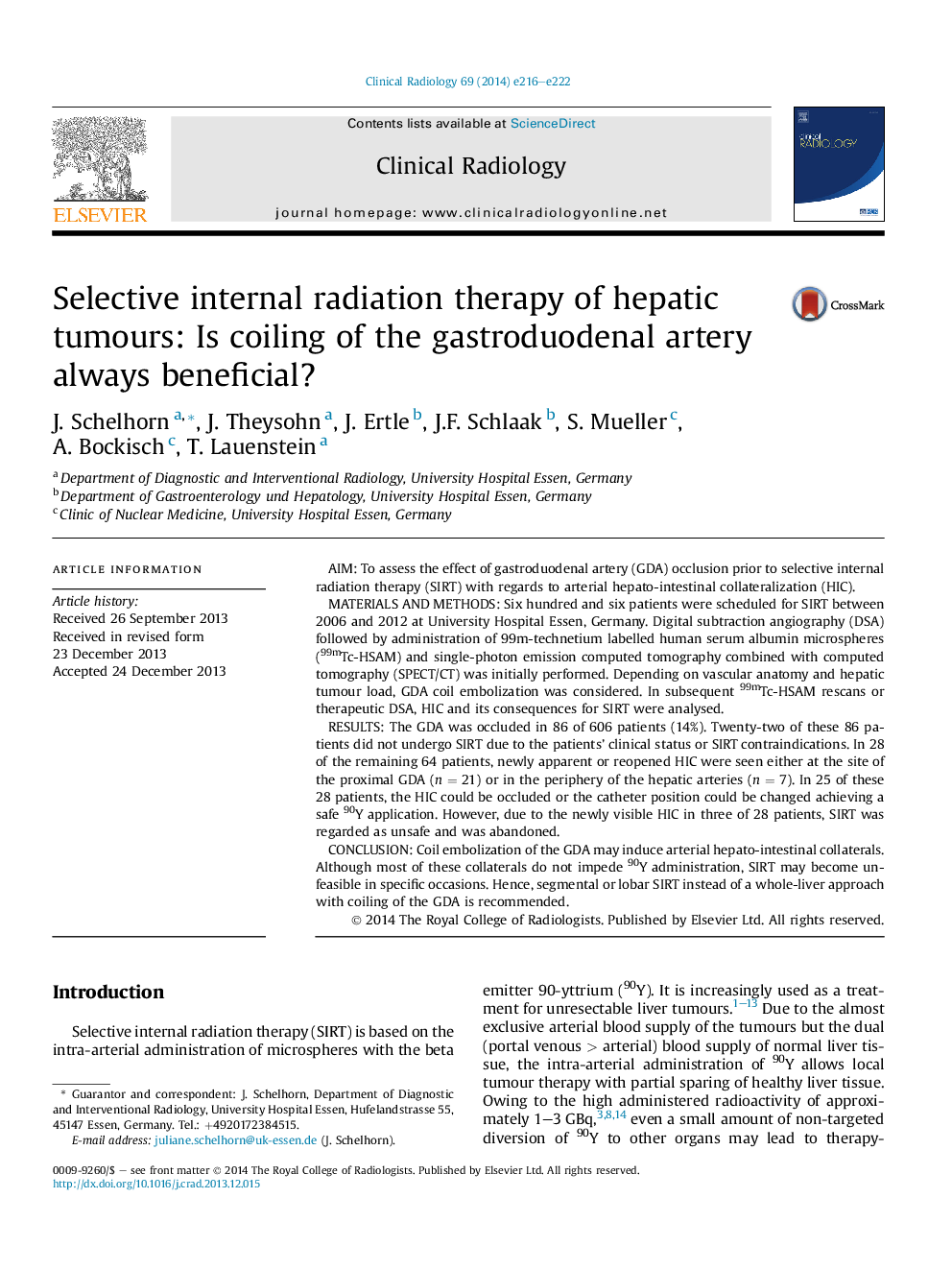| Article ID | Journal | Published Year | Pages | File Type |
|---|---|---|---|---|
| 3982349 | Clinical Radiology | 2014 | 7 Pages |
AimTo assess the effect of gastroduodenal artery (GDA) occlusion prior to selective internal radiation therapy (SIRT) with regards to arterial hepato-intestinal collateralization (HIC).Materials and methodsSix hundred and six patients were scheduled for SIRT between 2006 and 2012 at University Hospital Essen, Germany. Digital subtraction angiography (DSA) followed by administration of 99m-technetium labelled human serum albumin microspheres (99mTc-HSAM) and single-photon emission computed tomography combined with computed tomography (SPECT/CT) was initially performed. Depending on vascular anatomy and hepatic tumour load, GDA coil embolization was considered. In subsequent 99mTc-HSAM rescans or therapeutic DSA, HIC and its consequences for SIRT were analysed.ResultsThe GDA was occluded in 86 of 606 patients (14%). Twenty-two of these 86 patients did not undergo SIRT due to the patients' clinical status or SIRT contraindications. In 28 of the remaining 64 patients, newly apparent or reopened HIC were seen either at the site of the proximal GDA (n = 21) or in the periphery of the hepatic arteries (n = 7). In 25 of these 28 patients, the HIC could be occluded or the catheter position could be changed achieving a safe 90Y application. However, due to the newly visible HIC in three of 28 patients, SIRT was regarded as unsafe and was abandoned.ConclusionCoil embolization of the GDA may induce arterial hepato-intestinal collaterals. Although most of these collaterals do not impede 90Y administration, SIRT may become unfeasible in specific occasions. Hence, segmental or lobar SIRT instead of a whole-liver approach with coiling of the GDA is recommended.
